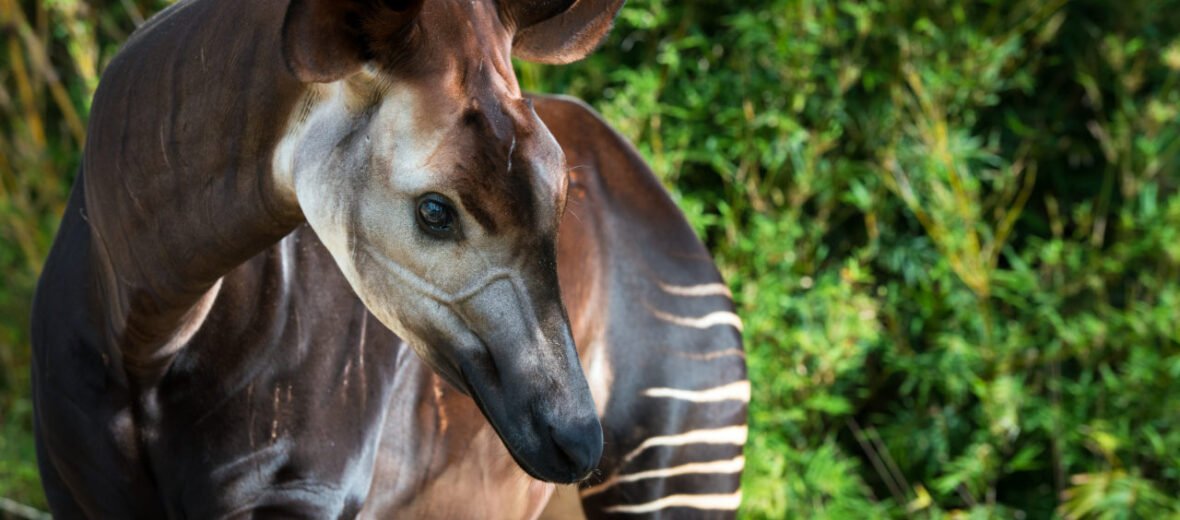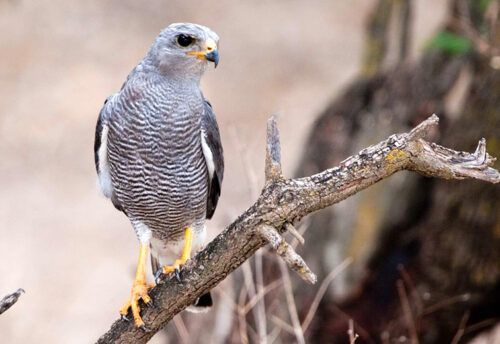
Say hello to the okapi (pronounced oh-COP-ee). It’s the only known relative of the giraffe. They can be found in the northern, central, and eastern parts of Africa’s Congo region. They like the wet and thick vegetation of the rainforest. These beautiful beasts’ numbers have fallen dramatically since the 20th century, due to deforestation, hunting, and fungal, bacterial, and viral infections. When first discovered, their numbers were approximately 45,000+. Now they barely reach an estimated 25,000. The IUCN lists them as Endangered and their numbers are still decreasing.
First the Stats…
Scientific name: Okapia johnstoni
Weight: Up to 770 lbs.
Length: Up to 8.2 feet
Height: Up to 5.5 feet
Lifespan: Up to 30 years
Now on to the Facts!
1.) Okapi are typically diurnal, but they have been seen feeding at night.
2.) These cool critters eat over 100 species of plants.
3.) They are the only species of forest-based ungulate that depends on understory foliage for survival.
4.) Okapi are typically solitary and territorial. They will mark their territory via stinky, tar-like markings using their feet and will also use urine to mark territories.
5.) They are strict herbivores (eat plant matter) that use their long tongues to pull down branches and then strip the leaves off the branch with their mouth.
But wait, there’s more on the okapi!
6.) Their tongue is prehensile (able to grasp items, such as leaves, almost like an extra hand).
7.) Okapis can rotate their ears independently to better keep on the lookout for predators.
Did you know…?
The okapi’s tongue can be as long as 18 inches! They are even able to lick their ears and eyelids.
8.) Calves won’t defecate for up to 8 weeks after birth, as doing so might give their location away to predators.
9.) Okapi are ruminants, like cows. They swallow and regurgitate their food for additional digestion several times.
10.) In order to keep in contact with her calf, the female will produce an infrasonic call at around 14Hz that only the calf can hear.
But wait, there’s still more on the okapi!
11.) Females give birth to a single calf after a 14 – 16 month gestation (pregnancy).
12.) Leopards and mountain lions prey on okapis.
Now a Short Okapi Video!
Learn more about all kinds of cool critters, right here!
Be sure to share & comment below! Also, check out the Critter Science YouTube channel. Videos added frequently!



